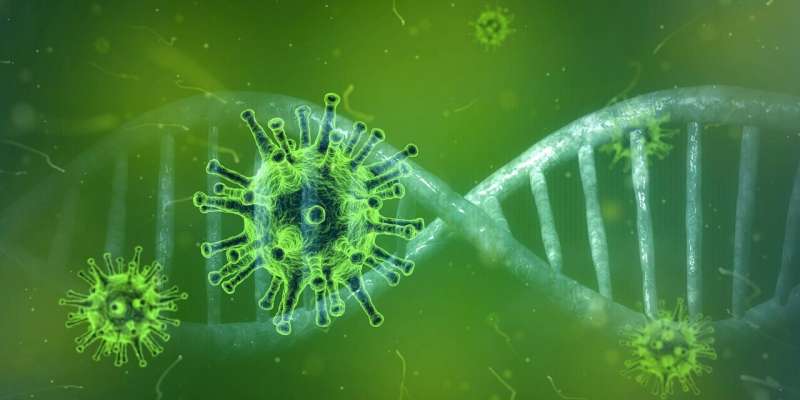How an antibiotic acts as an antiviral, hitting the COVID-19 virus with a three-pronged attack

New research published in the International Journal of Computational Biology and Drug Design describes a novel lipopeptide antibiotic that can inhibit the replication of the SARS-CoV-2 virus, which causes COVID-19. The compound, known as Kannurin, interferes with RNA-dependent-RNA polymerase activation and function, the researchers explain.
H. Shabeer Ali of the Division of Molecular Parasitology and Immunology at the CSIR-Central Drug Research Institute, in Lucknow, Uttarpradesh, India, and P. Prajosh and K. Sreejith of the Department of Biotechnology and Microbiology at Kannur University, in Kerala, and M. Divya Lakshmanan of the Molecular Biology Division at the Yenepoya Research Centre at Yenepoya (Deemed to be University), in Deralakatte, Mangalore, explain that the key component non-structural protein 12, nsp12, of the coronavirus is a primary target for pharmaceutical intervention in the treatment of COVID-19.
The team has undertaken computer-based, in silico, experiments with the known broad-spectrum antibiotic Kannurin against the virus. They explain that the cyclic form of this drug interacts with the amino acid residues Phe 407, Leu 544, and Lys 511 which are present in the “finger” subdomain of the nsp12 protein. It is this interaction, which blocks the natural binding of nsp7 and nsp8 cofactors and so inhibits and ultimately inactivates viral activity and replication.
An additional mode of action related to that exploited by the well-known antiviral, Remdesivir, was also identified by the team for the lipopeptide. The second mechanism involves an interaction with the amino acid residue Arg 555 in the viral protein’s “palm” subdomain cavity and the linear form of Kannurin. A double mode of action could well offer a more potent attack on the virus. Importantly, from the point of view of antiviral mechanisms, Kannurin is not acting as an analog of a natural nucleotide to carry out its blocking task. Indeed, Kannurin also has surfactant properties and can perturb cell membranes, which means it can interfere with the initial viral attachment to the body’s cells and so block entry, so this drug, in effect has a three-pronged attack on the virus.
Source: Read Full Article


